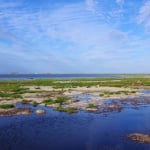Name: Site of Isami Kondo’s Headquarters
Address: 2-122-3 Nagareyama, Nagareyama City, Chiba Prefecture
Official Website: http://www.nagareyamakankou.com/entry.html?id=135865

7 Tourist Spots in Nagareyama, Chiba — A Journey to the City of Mirin and the Shinsengumi!
Nagareyama is a suburban city in the northwestern part of Chiba Prefecture, adjacent to Saitama Prefecture. During the Edo period, it flourished thanks to the water transportation on the Edo River and as the birthplace of shiro mirin (sweet rice wine).
Even today, Nagareyama retains the strong atmosphere of a traditional merchant town. In recent years, however, the city's connection with the Shinsengumi has been in the spotlight.
Nagareyama is known as the place where the two top leaders of the Shinsengumi, Commander Isami Kondo and Vice-Commander Toshizo Hijikata, parted ways for the last time. Although their stay in Nagareyama was brief, historic sites related to the Shinsengumi can still be found throughout the city.
For fans of the Shinsengumi and the Bakumatsu era, Nagareyama is a must-visit. Let us guide you through the city’s fascinating historical spots without leaving anything out!
table of contents
[x] close
7 Tourist Spots in Nagareyama, Chiba — A Journey to the City of Mirin and the Shinsengumi!
1. Nagareyama Honcho Area
Nagareyama, which developed as a river port town along the Edo River during the Edo period, is a great sightseeing spot where most attractions are located within walking distance from Nagareyama Station on the Ryutetsu Nagareyama Line. A stroll through the long, narrow Honcho area stretching between the station and the Edo River can easily fill up your day.
Here are some recommended sightseeing spots in the charming Nagareyama Honcho area:
◆ Site of Isami Kondo’s Headquarters
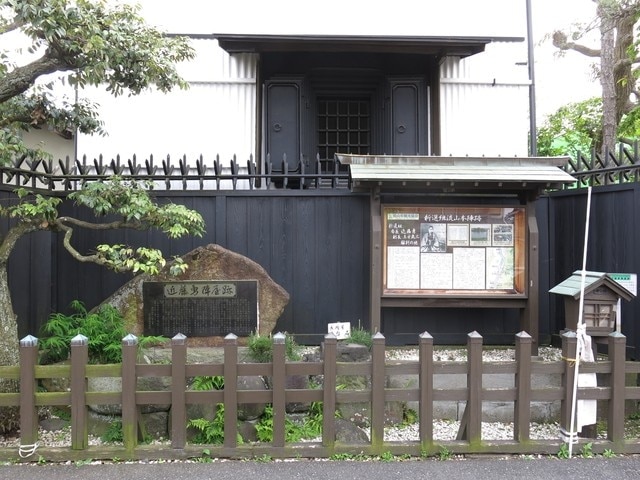
No visit to Nagareyama Honcho is complete without exploring historical sites related to the Shinsengumi. After being defeated by the Meiji government forces, the remaining Shinsengumi troops regrouped at the Kaneko family’s residence in present-day Nishi-Ayase, Adachi Ward, before moving to Nagareyama with about 200 members.
The main unit, led by Commander Isami Kondo—who was using the alias “Okubo Yamato”—set up their temporary headquarters at Nagaokaya, a local sake brewery. Other units stationed themselves in nearby temples and inns. However, the very next day, the vanguard of the new government forces surrounded Nagareyama. To avoid involving the town in the conflict, Kondo decided to surrender voluntarily.
At that moment, Vice-Commander Toshizo Hijikata and Hajime Saito, who insisted on fighting to the end, parted ways with Kondo and fled further north. Kondo was later executed by beheading in Itabashi, making Nagareyama the site of the final farewell between Kondo and Hijikata.
Today, only a stone monument stands at the site of Nagaokaya, known as the Site of Isami Kondo’s Headquarters, which remains a beloved historic spot visited by Shinsengumi fans.
◆ Kaleidoscope Gallery - Teradaen Chaho Misegura
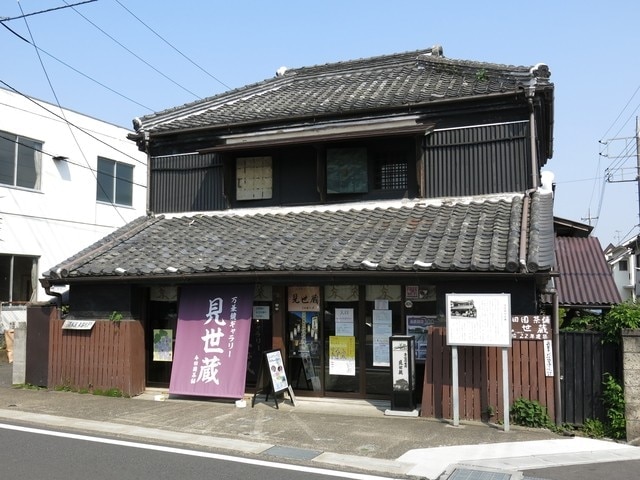
A misegura is a traditional storehouse that served as both a shop and a residence. The misegura of Teradaen Chaho was built in 1889 (Meiji 22) and was used until the mid-Showa era. In 2010, it was renovated and transformed into a new tourist attraction—the Kaleidoscope Gallery on the first floor, which was originally the store space.
The gallery displays art pieces by Yasuko Nakazato, a world-renowned kaleidoscope artist from Nagareyama City. Whether you admire it from the outside or step inside to explore the magical world of kaleidoscopes, it’s a perfect stop for resting during your stroll through Nagareyama.
Name: Kaleidoscope Gallery - Teradaen Chaho Misegura
Address: 2-101-1 Nagareyama, Nagareyama City, Chiba Prefecture
Official Website: http://www.issasoju-leimei.com/misegura/1.gendai/gendai.html
◆ Issa Soju Memorial Hall
“Issa” refers to the renowned Edo-period haiku poet Kobayashi Issa, while “Soju” was the pen name of Akimoto Sanzaemon V, a wealthy mirin brewer in Nagareyama. Their friendship was so deep that Issa visited Soju in Nagareyama dozens of times.
The Issa Soju Memorial Hall was established by relocating and reconstructing the Akimoto family’s main residence—originally built in the late Edo period—on the city-designated historic site where Kobayashi Issa once stayed.
From this grand merchant’s residence, you can view a beautifully maintained kare-sansui (dry landscape) garden. The simple yet elegant seasonal scenery of this garden might even inspire you to compose your own haiku.
Name: Issa Soju Memorial Hall
Address: 6-670-1 Nagareyama, Nagareyama City, Chiba Prefecture
Official Website: http://www.issasoju-leimei.com/issa/issa_index.html
◆ Nagareyama Honcho Machinaka Museum
Nagareyama is also known for the invention of "white mirin" during the late Edo period! In particular, Manjo Mirin, founded by Monjiro Horikiri in 1814, became one of the most famous mirin producers in the region. It grew so successful that a dedicated railway spur (the Manjo Line) was built just to transport materials to and products from the factory—part of the old railway line remains as a walking path today.
At the end of this former spur line stands the old Manjo Mirin factory (now Kikkoman factory). Its exterior wall serves as the display area for the Nagareyama Honcho Machinaka Museum, which introduces the rich history of Nagareyama’s mirin production—a must-visit for anyone interested in the city’s prosperity and heritage.
Name: Nagareyama Honcho Machinaka Museum
Address: 3-90 Nagareyama, Nagareyama City, Chiba Prefecture
Official Website: http://www.nihon-kankou.or.jp/chiba/detail/12220ad2152096364
◆ Enmado (Enma Hall)
A small sightseeing spot next to the Site of Isami Kondo’s Headquarters, Enmado (Enma Hall) houses the graves of Ichinojo Kaneko, a righteous thief nicknamed the "Nagareyama Nezumi Kozō," and his lover, a courtesan named Michitose. Their tragic love story inspired Kabuki plays like "Ten'ichibun Ueno no Hatsuhana" and storytelling performances such as "Tenpo Rokka Sen."
Another highlight of Enmado is the "Hokuso Shinsengumi" performance, held on weekends and holidays. All female members don the traditional dandara haori jackets of the Shinsengumi and perform sword dances—a fascinating sight to witness on your weekend visit to Nagareyama.
You can even try the "samurai experience" offered by Hokuso Shinsengumi at Enmado. By reservation, you’ll get to wear the dandara haori and participate in training!
Name: Enmado
Address: Nagareyama 2, Nagareyama City, Chiba Prefecture
Official Website: http://ameblo.jp/souhonjin/
2. Dutch Heritage - Tone Canal
At the northern tip of Nagareyama City flows the Tone Canal, connecting the Tone River and the Edo River. This 8.5-kilometer canal was constructed in 1890 (Meiji 23) as a new water transport route. It was designed by Dutch engineer Louwenhorst Mulder. Even after its logistics purpose ended, the canal became known as the "Dutch Heritage Tone Canal" and is now a relaxing spot beloved by locals and tourists.
Uniquely meandering through the landscape, the canal area is rich in nature, making it hard to believe it’s man-made. Cherry blossoms bloom in spring, lush greenery fills summer, and vivid red spider lilies cover the embankments in autumn. This scenic spot perfectly combines Nagareyama’s nature and history.
The nearest station is aptly named "Unga Station" on the Tobu Noda Line—just three stops from Nagareyama-Otakanomori Station on the Tsukuba Express, making it easily accessible from central Tokyo.
Name: Dutch Heritage - Tone Canal
Address: Higashifukai and surrounding areas, Nagareyama City, Chiba Prefecture
Official Website: http://www.nagareyamakankou.com/entry-info.html?id=133713
3. Ryutetsu Nagareyama Line
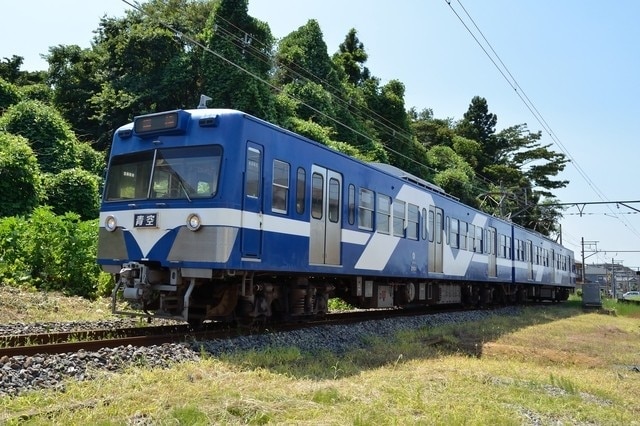
The "Ryutetsu Nagareyama Line" is considered the soul train of Nagareyama citizens. Originally established to transport local specialties like soy sauce and mirin, it runs just 5.7 km between Nagareyama Station and Mabashi Station.
"Ryutetsu" is an abbreviation for "Nagareyama Electric Railway." Interestingly, this is the only line operated by the company! Known as "the closest local train to central Tokyo," it's popular among railway enthusiasts and tourists alike.
Including the terminals Nagareyama and Mabashi, there are only six stations in total. The journey takes about 12 minutes—a slow, relaxing ride. With just five trains in operation, each has its own name and color: "Ryuma," "Ryusei," "Akagi," "Wakaba," and "Nanohana."
Why not hop on this charming local train and take a trip to Nagareyama?
Name: Ryutetsu Nagareyama Line
Address: 1-264 Nagareyama, Nagareyama City, Chiba Prefecture
Official Website: http://ryutetsu.jp/
4. Nagareyama City Museum
If you want to learn about the history of Nagareyama, this is the place to start! Located next to the Nagareyama City Central Library, the museum features exhibits on general history, the story of mirin production, and materials related to the Shinsengumi.
Especially noteworthy are the displays on Matsugaoka Housing and Edogawa Housing, developed in the 1950s and considered the foundation of Nagareyama’s growth. The life-size dioramas recreating the lifestyle of that era will surely evoke nostalgia.
Best of all, general admission is free (except for special exhibitions). It’s a great place to visit first when touring Nagareyama for information gathering!
Name: Nagareyama City Museum
Address: 1-1225-6 Ka, Nagareyama City, Chiba Prefecture
Official Website: http://www.city.nagareyama.chiba.jp/institution/93/567/005539.html
5. Shinsengumi Lodging Tour
For a brief period, the Shinsengumi stayed in Nagareyama. While Commander Isami Kondo and key executives stayed at their temporary headquarters, Nagaokaya, the other members were split and lodged at two nearby temples.
Both temples are historically significant, boasting a rich heritage even back then. Visiting these sites allows you to follow the Shinsengumi's traces while also learning about the local history of Nagareyama.
◆Komyoji Temple
Located a 10-minute walk from Heiwadai Station on the Ryutetsu Nagareyama Line, Komyo-in Temple's official name is Akagisan Komyo-in Kaguraji. During the Edo period, it served as the praying temple of the adjacent Akagi Shrine.
At the back of the temple grounds, you’ll find a sign that reads "Temple where Shinsengumi warriors stayed." The site also holds the grave and linked-verse monument of Soju Akimoto, a friend of the famous haiku poet Kobayashi Issa. Known for its spacious and mystical grounds, Komyo-in has quietly watched over Nagareyama's history.
Name: Komyo-in Temple
Address: 6-651 Nagareyama, Nagareyama City, Chiba Prefecture
Official Website: http://maruchiba.jp/sys/data/index/page/id/8828
◆ Nagareyama-dera Temple
A short walk from Komyo-in, Nagareyama-dera Temple also served as a lodging place for the Shinsengumi. Established in the early Edo period, its grounds feature a haiku monument of the poet Tokyu Okawa.
The temple is also one of the "Nagareyama Seven Lucky Gods," and its cheerful-looking statue of Daikokuten (God of Wealth) is a must-see.
Name: Nagareyama-dera Temple
Address: 7-589 Nagareyama, Nagareyama City, Chiba Prefecture
Official Website: http://www.nagareyamakankou.com/entry.html?id=135821
6. Akagi Shrine
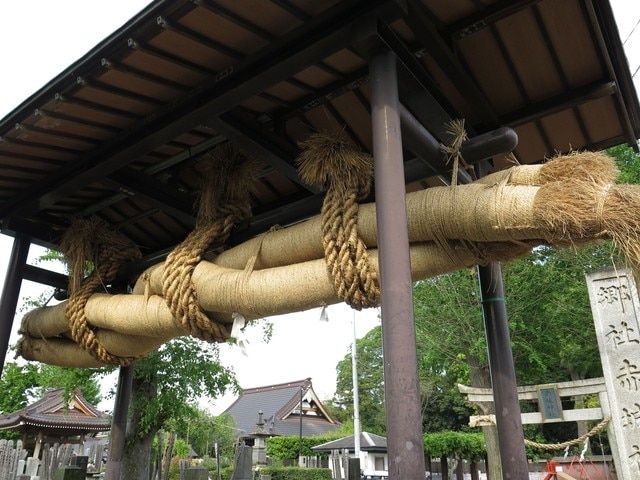
Located near Komyo-in and Nagareyama-dera temples, Akagi Shrine is said to be the origin of Nagareyama's name. The small hill where the shrine stands was supposedly formed when volcanic soil from Mt. Akagi in Gunma Prefecture flowed down and settled here during an eruption. This very spot is the "Nagareyama" (flowing mountain) that gave the city its name.
One of the main highlights is the massive shimenawa (sacred straw rope) at the shrine gate — impossible to miss! It measures 10 meters long, 1.5 meters thick, and weighs an incredible 500 kg. The annual event of creating this "Great Shimenawa" is held on the third Saturday of October and is designated as an Intangible Folk Cultural Asset of Nagareyama City.
Name: Akagi Shrine
Address: 6-649 Nagareyama, Nagareyama City, Chiba Prefecture
Official Website: http://www.nagareyamakankou.com/entry.html?id=135825
7. Nagareyama Fireworks Festival
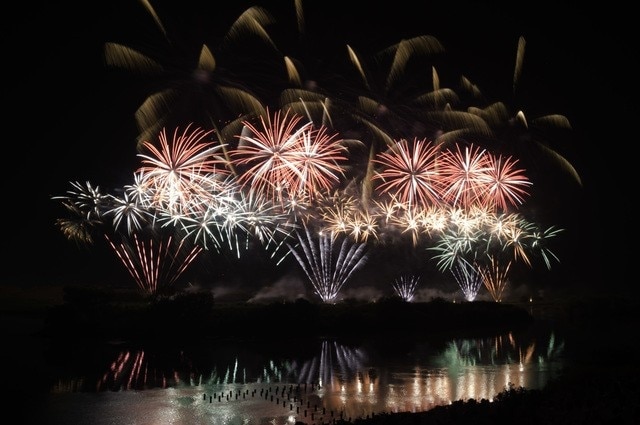
A classic summer tradition in Nagareyama, which once prospered through river transportation on the Edogawa River, is the Nagareyama Fireworks Festival. The beautiful and elaborate fireworks — including star mines and message fireworks — light up the Edogawa riverbank, rivaling even Tokyo’s famous Sumida River Fireworks.
One of the must-see attractions is the "Sky Musical", a unique show that synchronizes music with fireworks, providing an impressive audio-visual experience for both locals and tourists.
Even better, the event is held on the same day as the fireworks festival in Misato City, Saitama Prefecture, right across the river. That means you can enjoy two festivals in one trip! It's still relatively unknown compared to other major festivals, so it's highly recommended for those seeking a less crowded but equally stunning fireworks experience near Tokyo.
Name: Nagareyama Fireworks Festival
Address: Near 1–3 Nagareyama, Nagareyama City, Chiba Prefecture
Official Website: http://www.nagareyamakankou.com/entry.html?id=136926
◎ Summary
We’ve introduced 7 must-see tourist spots in Nagareyama, the city known for the Shinsengumi and Mirin. If you’ve never considered visiting Nagareyama before, we hope this guide changes your mind. Despite being known as a commuter town for Tokyo, Nagareyama is full of charming historical attractions.
From the mid-Edo period's mirin industry, the Shinsengumi at the end of the Edo period, to the modern Meiji-era canals — Nagareyama offers a rich and fragrant slice of history. Exploring the area via the local Ryutetsu Nagareyama Line is recommended, but with the opening of the Tsukuba Express, direct access from Tokyo has become even more convenient.
Why not let the Shinsengumi boom guide your next trip — and flow into the historic and fascinating Nagareyama?
RELATED ARTICLES
REGIONS
CATEGORIES
FEATURED ON Chiba
-
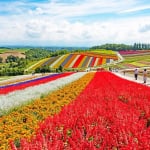
Where will you go for the summer vacation? Introducing recommended spots for domestic travel
-

[4-Day Weekend Outings] If You’re in Kanto, Here’s Where to Go! Prefecture-by-Prefecture Low-Crowd Spots
-
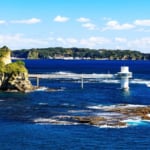
[Chiba Prefecture] Introducing a model 1-night, 2-day sightseeing itinerary for Katsuura!
-
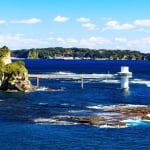
【Chiba Prefecture】Introducing a 2-Day, 1-Night Katsuura Sightseeing Model Course!
-
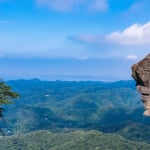
[Chiba Prefecture] Explore Nokogiriyama and Nihon-ji Temple! Experience the Thrill of “Jigoku Nozoki” (Hell Peeking)
MOST POPULAR ON Chiba
-
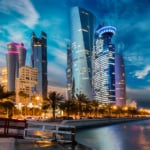 1
1Doha: Must-see Attractions in the Capital of Qatar
-
 2
2Toronto: 10 Things to do in this Picturesque Canadian City
-
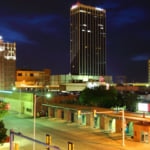 3
3Amarillo: A City Famous for It’s Amazing Canyons, Great History and Music
-
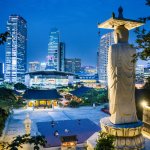 4
4South Korea: Dazzling Scenery, Rich Culture and Fascinating History
-
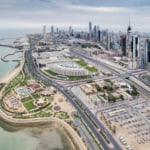 5
5Kuwait: A Country in Middle East Asia Famous for Hot Sand Dunes and Stunning Cityscape



